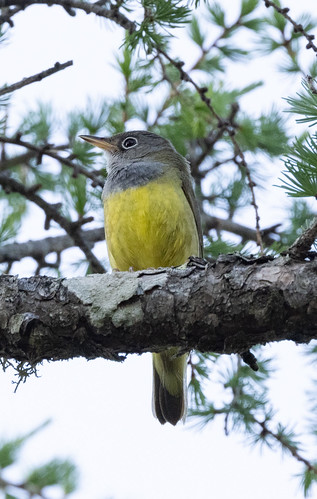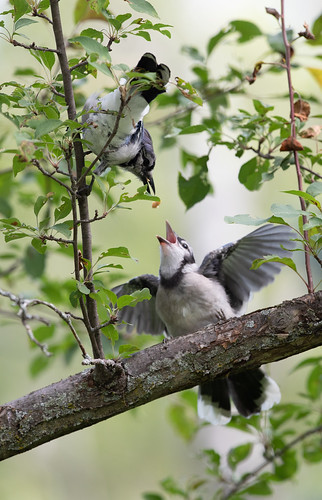I’m writing this on July 18, 2021, at my place in Duluth, Minnesota. There’s not a cloud in the sky, but the sky isn’t blue—more of a murky brownish gray. I can’t smell smoke today but I could yesterday, making us reluctant to open our windows last night—it’s hard to sleep when the inside temperature is 80º F, but even harder to sleep when you think about your baby grandchild, his tiny lungs still developing, breathing in dangerous particulates.
This year’s dry June and July are the worst northern Minnesota has experienced since the Dust Bowl. Exacerbating the situation is the smoke from fires associated with the heat and drought in Canada and the West. Here in Duluth, we’ve had air quality warnings for weeks now.
I’m taking this situation very personally because of Baby Walter, but he’s hardly the only baby out there, and hardly the only baby I’m personally concerned about. We human parents and grandparents can at least minimize our children’s exposure to dangerous outdoor conditions, but what can my backyard Blue Jays, chickadees, wrens, and robins do to minimize their own and their babies’ exposure to this ever-present smoke?
Last week, the smoke from those distant fires wasn’t the only source of particulates in Duluth’s air. The Minnesota Department of Agriculture sprayed parts of Duluth and outlying areas, including my neighborhood, for “gypsy” moths. These invasive, non-native moths have caused billions of dollars of damage to Eastern forests since the mid-1860s, when Étienne Léopold Trouvelotin, a French artist who had immigrated to Medford, Massachusetts, brought egg masses from Europe in hopes that he could breed a hardy silkworm by raising them in the forest behind his home. The first recorded defoliation by these moths in the United States was in 1889 of the street trees in Trouvelot's own neighborhood. The moths have also been brought in less intentionally—they arrived in New Jersey in 1920 on blue spruce trees imported from the Netherlands. Little by little the moth has worked its way west and south.
Spraying for it in recent decades has mostly involved what’s called BtK, the variety of Bacillus thuringiensis that targets lepidopteran larvae. Apparently little or nothing else is harmed by it, but it is utterly indiscriminate in which moth and butterfly caterpillars it kills.
 | |
| Caterpillars of all moths and butterflies, including this Great Spangled Fritillary, are killed by BtK |
 |
| This Connecticut Warbler was easy to photograph this June because the roadside ditch along the sphagnum moss-covered ground is usually knee-deep with water. This year it was distressingly dry. |
Thinking about my family and backyard birds and northern trees is sad enough, but then I think about the children and birds living in the huge swath of land where the fires are burning. When fires are small, at least some and often most birds and other animals can escape, but the size and duration of fires has been growing in recent decades. During the Dust Bowl, when conditions were as bad as people then could imagine, we were not yet spreading pesticides over the landscape, invasive species hadn’t taken over so much of our forests, prairies, and other habitats, and many of the other ways we've been developing and degrading habitat now make it even harder for a landscape to recover after a drought, even without a fire.
A half century ago, when I was in college, I learned about the serious threat of climate change, along with a huge host of other environmental dangers caused by burning fossil fuels: Power plants where coal or oil is burned release nitrogen oxides, sulfur dioxide, particulate matter, mercury, and carbon dioxide into the atmosphere along with small amounts of toxic metals such as arsenic, cadmium, chromium, and nickel, and we have to deal with horribly toxic oil pits and coal ash disposal sites, oil spills, and pipeline leaks—the list goes on and on. We knew with the gas crisis in the 70s that our dependence on fossil fuels was also an issue of national security.
Oil companies have long understood the implications of climate change, but even as they started planning ways to exploit Arctic oil supplies as the icepack melts, they've suppressed public information about climate change and ridiculed people talking about it, taking rather the opposite tack of Margaret Mead, who said, “I was brought up to believe that the only thing worth doing was to add to the sum of accurate information in the world.”
Think of the decades we’ve squandered doing so little to find clean alternatives! And now my baby grandson, and those baby chickadees I’ve so treasured this year, can’t play outside without breathing in toxic particulates.
Yes, I’m bitter and my sense of despair is growing. But just yesterday, my friend Karen posted a poem by Wendell Berry that calmed my soul, at least for a moment. He wrote:
The Peace of Wild ThingsWhen despair for the world grows in me
and I wake in the night at the least sound
in fear of what my life and my children’s lives may be,
I go and lie down where the wood drake
rests in his beauty on the water, and the great heron feeds.
I come into the peace of wild things
who do not tax their lives with forethought
of grief. I come into the presence of still water.
And I feel above me the day-blind stars
waiting with their light. For a time
I rest in the grace of the world, and am free.


